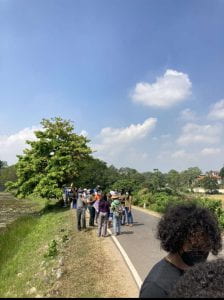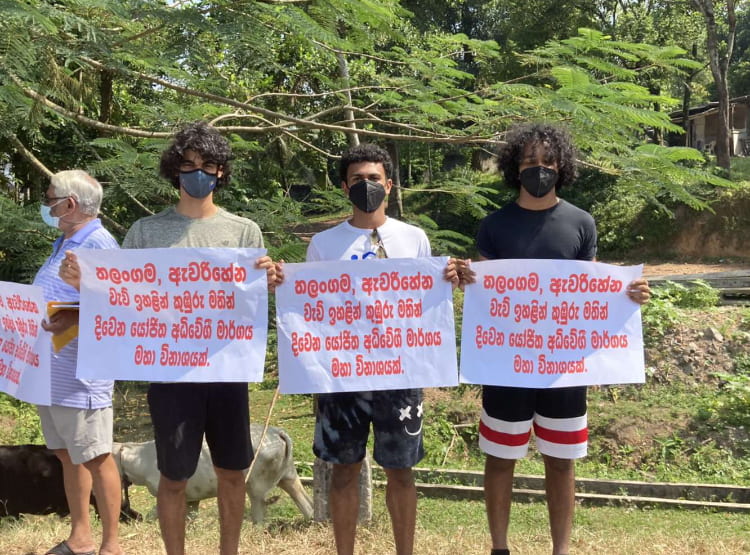In todays world of advanced technology, and increasing infrastructural development, the biggest priority has seemed to become unnoticed, and uncared for. That priority is our environment. Across the globe, we are seeing grasslands, forests, and wetlands being destroyed for the purpose of infrastructural advancement.
Over the last decade or so, this has become the reality in Sri Lanka. As our country spends billions on highways, flyovers, skyscrapers, and more, the beautiful nature which the island is so well known for is becoming disregarded. To worsen this, the impact of such rapid development means that many native and endemic species have their ecosystems destroyed. In fact, the last 30 years here have seen nearly half of Colombo’s wetlands destroyed as a result of urbanization. Every year this continues. The grounds of our very own school were nothing but forest and wetland not too long ago. Now however, there is nothing but busy roads and buildings surrounding it
A view of the Talangama Wetlands from the road
The Talangama Wetlands spread out over 20 square kilometers, and are crucial for the ecosystem. The general Colombo Wetlands are one of just 18 cities worldwide which are accredited Ramsar wetlands. Ramsar are a convention of international wetlands. It is a rich ecosystem, hosting hundreds of unique floral and animal species, including some species that are endemic to the region. These include various common wetland birds such as Herons, Egrets, and Storks. There is also over a thousand species of flora, monitor lizards, dragonflies, and even fishing cats. The wetlands play a vital role in terms of soaking up large amounts of water. If the wetlands around the city continue to be lost, flooding could become an increasing issue. The wetlands are also a source of income for local farmers, who rely on the lush paddy fields to make a living.
Many Species like the birds here call the wetlands their home
Recently however, the government announced plans to build a highway over these wetlands. Construction cannot be far away, as government officials have already planted sticks to show their plans. Construction of this road will have devastating effects on the environment. Therefore, residents of the Talangama lake area organized a protest on the morning of Saturday 13th of February. The purpose was to make it know that the residents of the area were not happy with the plans, and demanded that the government do not go ahead with their plans to build the highway. The protest was planned for and promoted through social media, so when the day turned up, there were nearly 170 participants. This included members of the media, as the protest was covered by Sri Lankan News channel News First.
LO6 Demonstrate engagement with issues of global significance

 Pictures of the Protest, with Local News in Attendance
Pictures of the Protest, with Local News in Attendance
The message was simple. Do not go ahead with the construction of the highway, and protect the Talangama Wetlands. Each participant was given signs on which the message was written. These were shown to passing cars, and flyers were also handed out to those generous enough to stop. The entire ordeal lasted around two hours, and the news story was then aired later that night. We hope that the protest results in some positive change, and the highway plans are scrapped for good.

